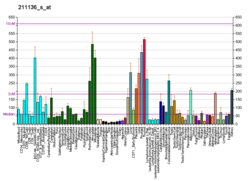| CLPTM1 | |||||||||||||||||||||||||||||||||||||||||||||||||||
|---|---|---|---|---|---|---|---|---|---|---|---|---|---|---|---|---|---|---|---|---|---|---|---|---|---|---|---|---|---|---|---|---|---|---|---|---|---|---|---|---|---|---|---|---|---|---|---|---|---|---|---|
| Identifiers | |||||||||||||||||||||||||||||||||||||||||||||||||||
| Aliases | CLPTM1 , transmembrane protein, CLPTM1 regulator of GABA type A receptor forward trafficking | ||||||||||||||||||||||||||||||||||||||||||||||||||
| External IDs | OMIM: 604783; MGI: 1927155; HomoloGene: 37464; GeneCards: CLPTM1; OMA:CLPTM1 - orthologs | ||||||||||||||||||||||||||||||||||||||||||||||||||
| |||||||||||||||||||||||||||||||||||||||||||||||||||
| |||||||||||||||||||||||||||||||||||||||||||||||||||
| |||||||||||||||||||||||||||||||||||||||||||||||||||
| |||||||||||||||||||||||||||||||||||||||||||||||||||
| Wikidata | |||||||||||||||||||||||||||||||||||||||||||||||||||
| |||||||||||||||||||||||||||||||||||||||||||||||||||
| Cleft lip and palate transmembrane 1 | |||||||||
|---|---|---|---|---|---|---|---|---|---|
| Identifiers | |||||||||
| Symbol | CLPTM1 | ||||||||
| Pfam | PF05602 | ||||||||
| InterPro | IPR008429 | ||||||||
| |||||||||
Cleft lip and palate transmembrane protein 1 (Clptm1) is a multi-transmembrane protein that in humans is encoded by the CLPTM1 gene. [4] [5] Clptm1 was characterized in 1995 as a surface membrane protein in the thymus during embryonic development in mice and is suggested to have an important role in T-cell development. [6] [7] A more recent study shows a role in GABAA receptor subunit intracellular anchoring and regulation resulting in an influence on synaptic strength [8] Clptm1 belongs to a family of several eukaryotic cleft lip and palate transmembrane protein 1 sequences.
Cleft lip with or without cleft palate is a common birth defect that is genetically complex. The non-syndromic forms have been studied genetically using linkage and candidate-gene association studies with only partial success in defining the loci responsible for orofacial clefting. CLPTM1 encodes a transmembrane protein and has strong homology to two Caenorhabditis elegans genes, suggesting that CLPTM1 may belong to a new gene family. [9] This family also contains the Homo sapiens cisplatin resistance related protein CRR9p which is associated with CDDP-induced apoptosis. [10]



